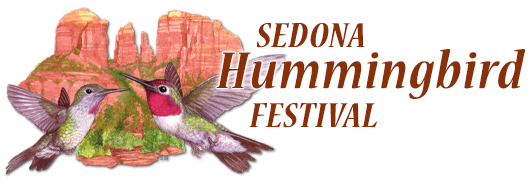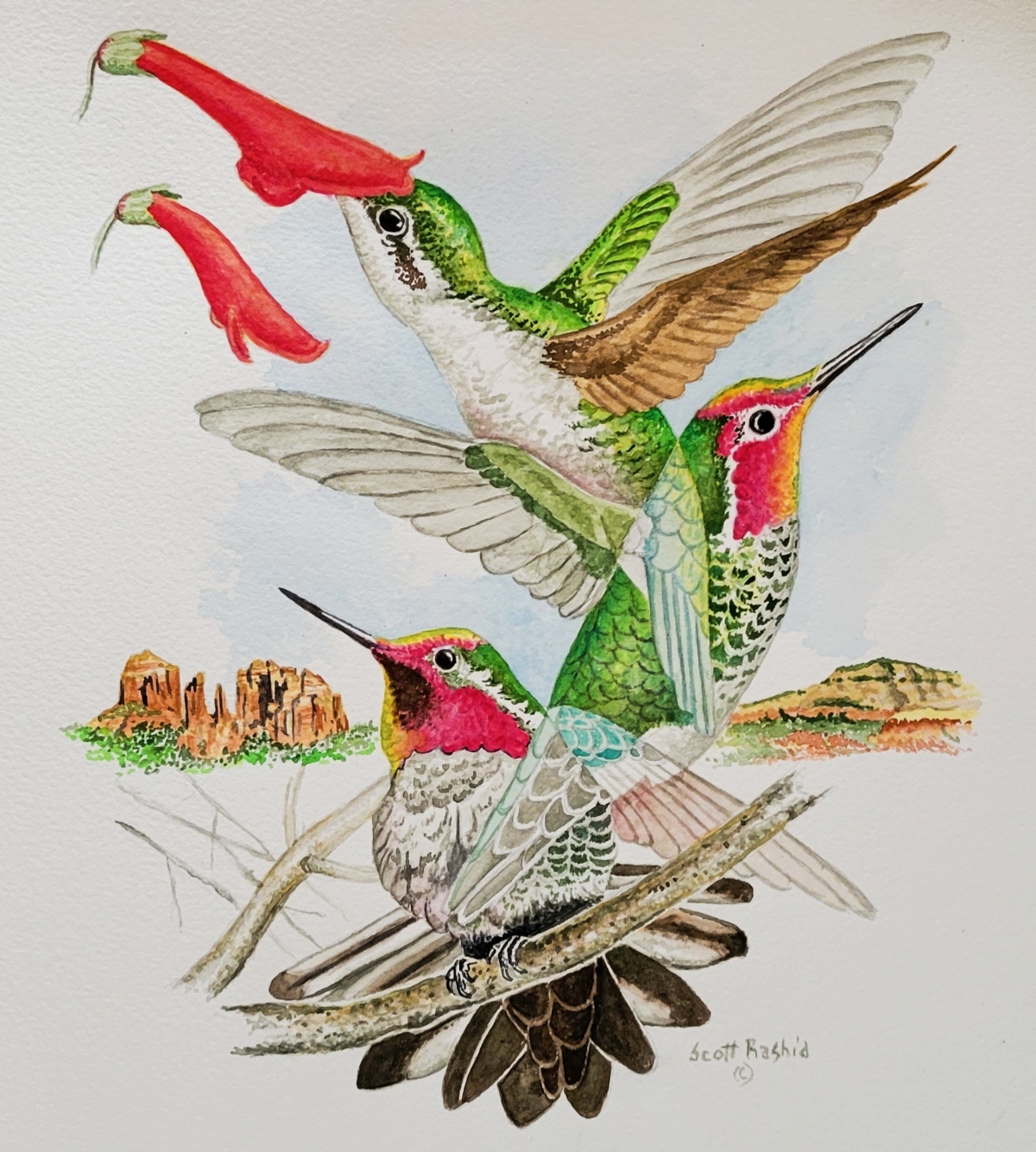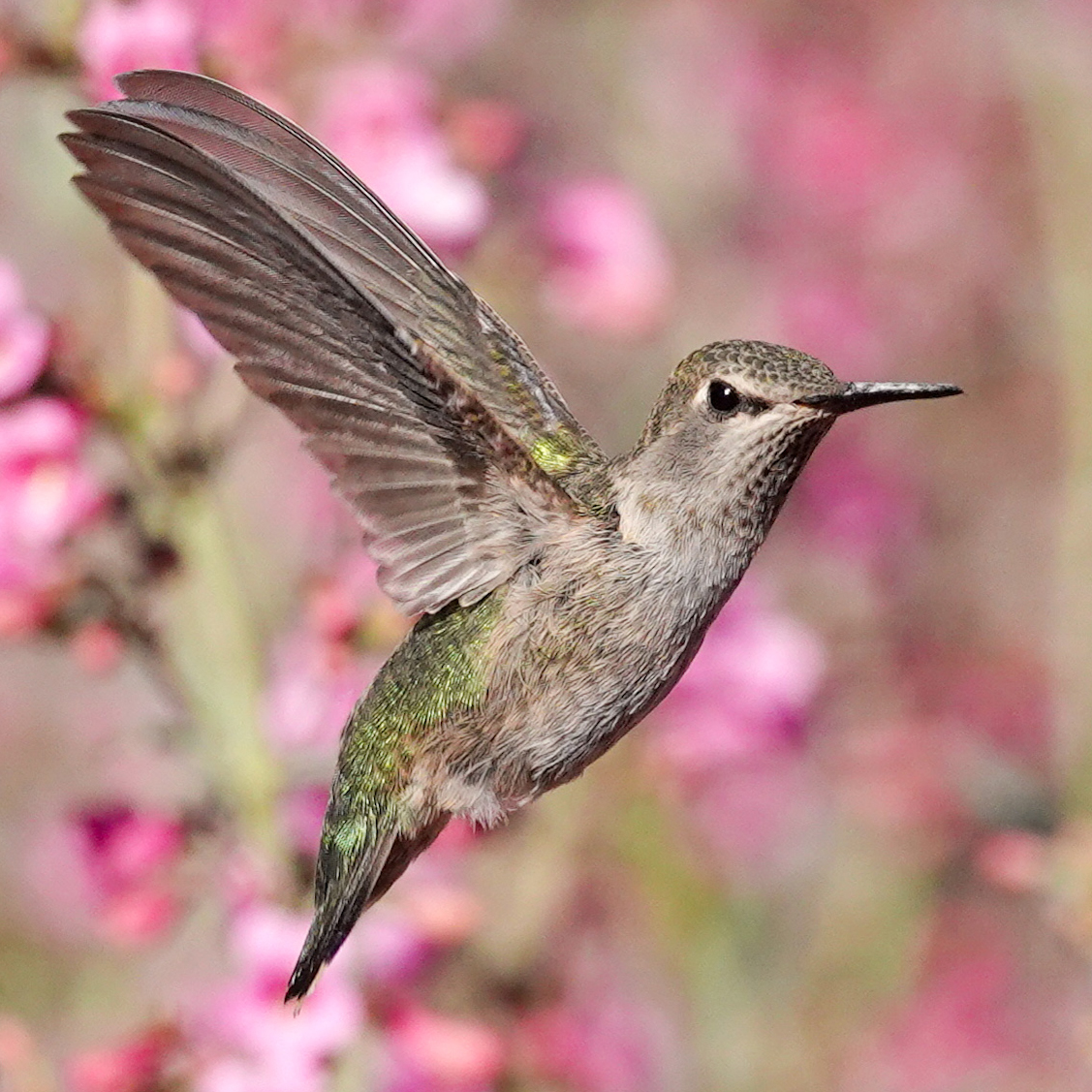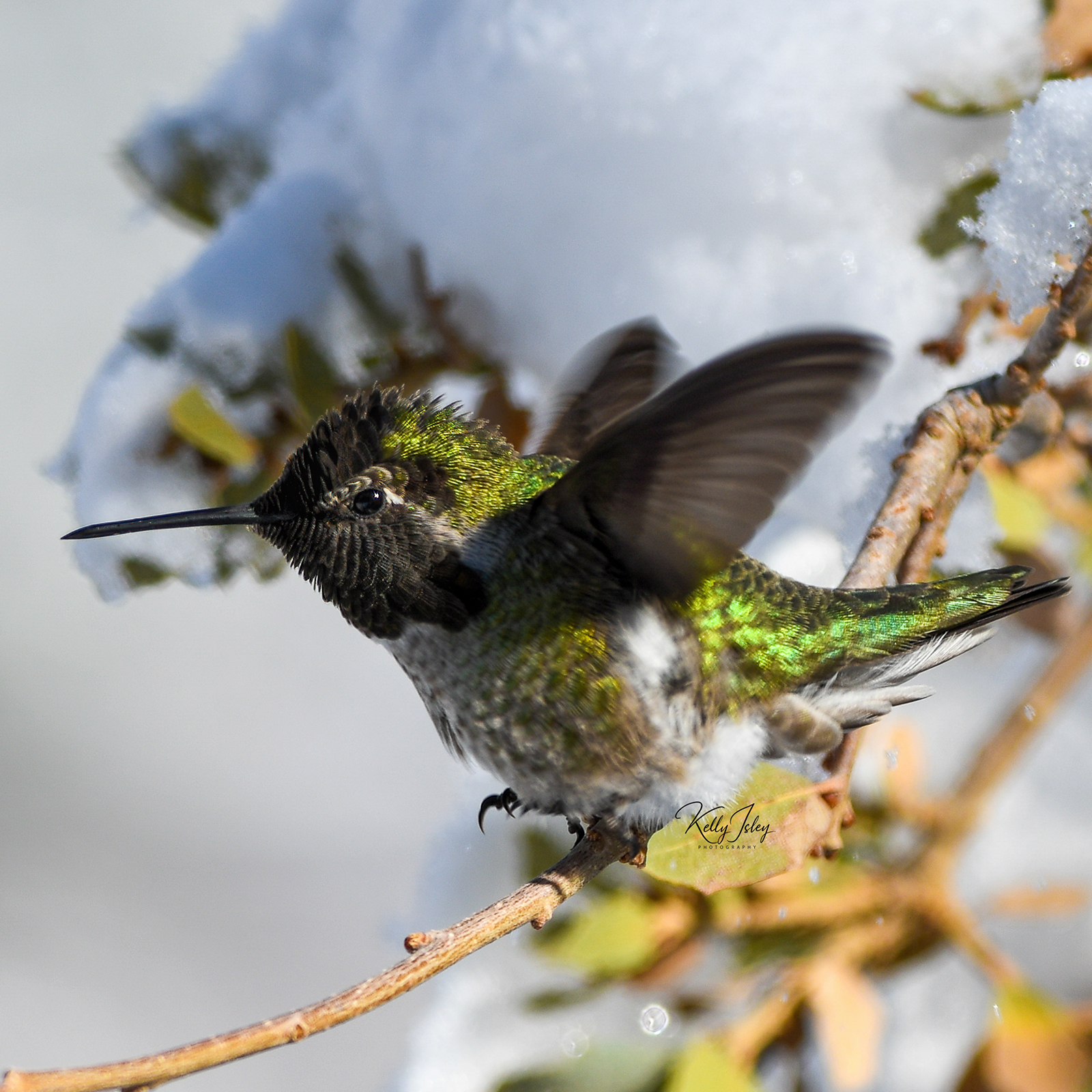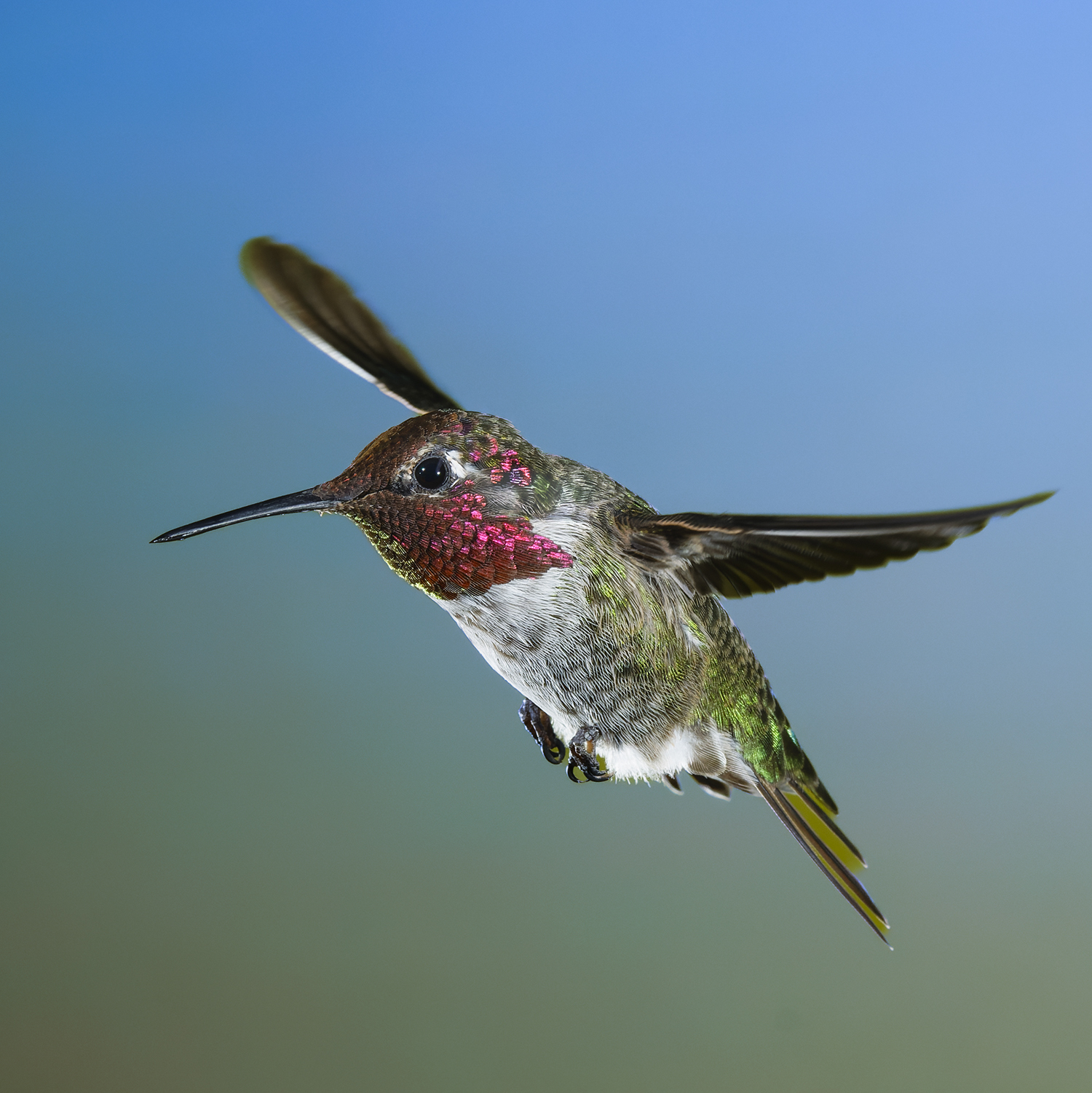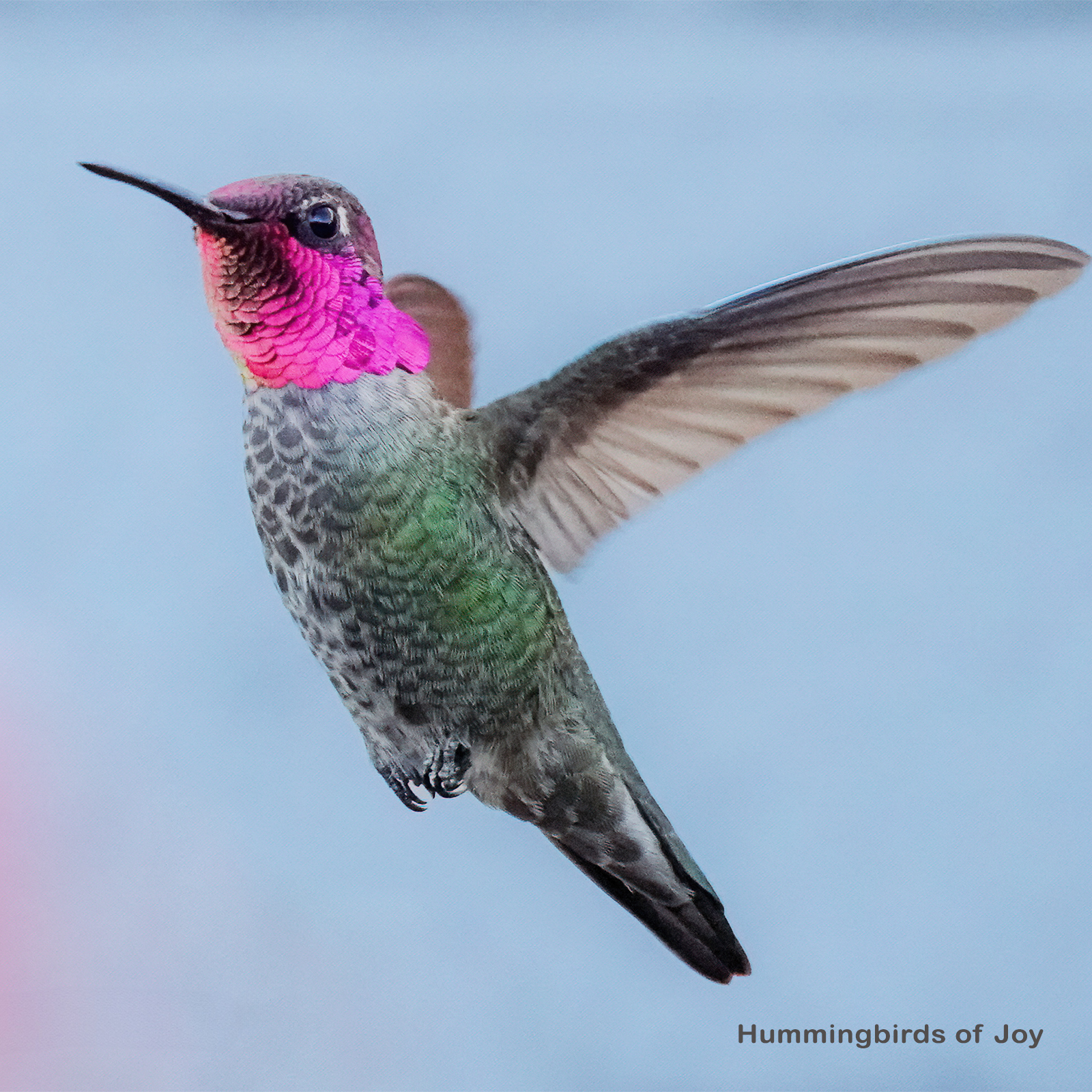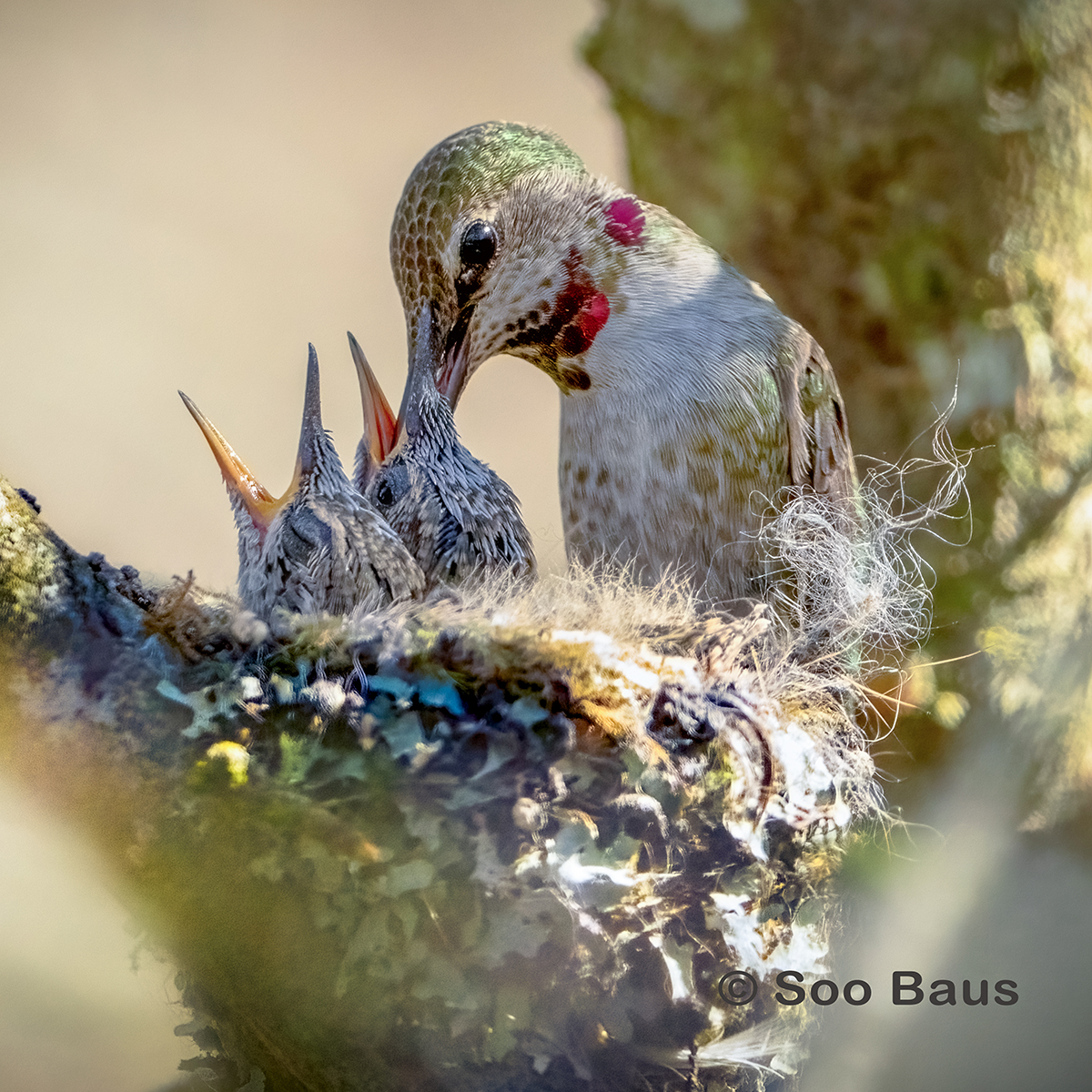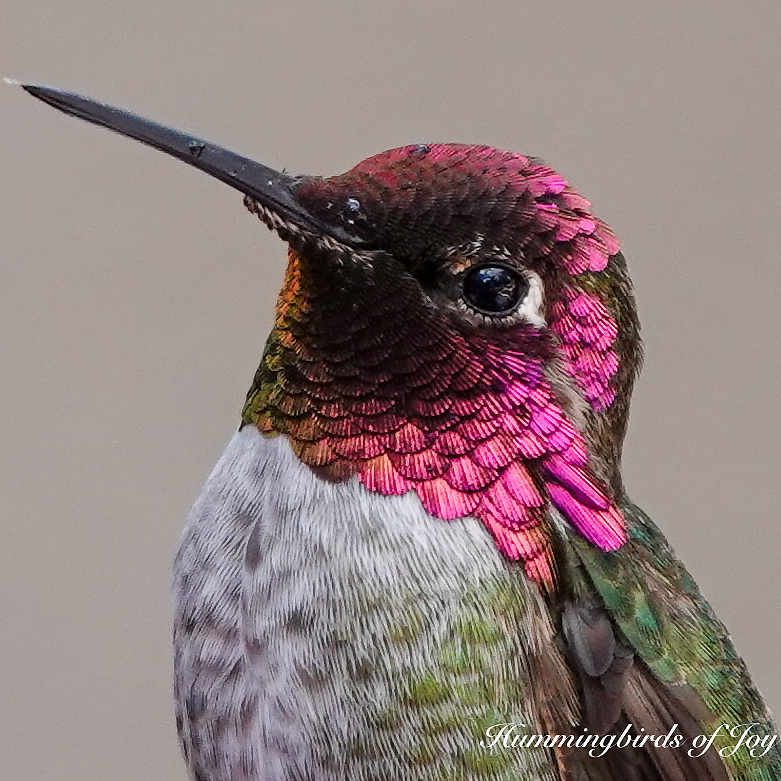The Anna’s Hummingbird
Festival T-shirt
To honor our Festival Bird, master bander and artist Scott Rashid created this stunning painting of two male and a female Anna’s Hummingbirds. This image will be featured on our 2025 Festival T-shirt, which will be available for online ordering now. Pick the style, size and color you want, and pick it up at the Festival!
The original painting will be available in our live auction during the Festival Dinner on Saturday evening.
Cool facts about the Anna’s Hummingbird
Primarily a resident of North America’s west coast, the Anna’s Hummingbird’s southern range extends east into Arizona. Unfazed by snow, they are year-round residents of Sedona — and as far north as British Columbia. They are even seen with some regularity in southwestern Alaska, although their numbers there are very small. Highly adaptable, Anna’s are comfortable in urban areas as well as wild open space such as scrub and chaparral or stands of oak or eucalyptus trees.
Prior to the 1950s these birds were mostly found in Baja and Southern California and did not breed north of San Francisco. But as humans expanded their gardens and planted eucalyptus trees that bloom in winter, the Anna’s kept extending their range. These hardy little birds seem to take snow in stride and generally don’t migrate south. In winter they are able to find food: soft-bodied insects and spiders, some flowering trees and shrubs, tree sap, and of course nectar from feeders. In some areas they will migrate short distances to reach higher elevations in summer and lower in winter.
Extreme Diving and Other Courtship Maneuvers
During courtship, a male will put on a memorable display of exorbitant speed and strength, rising up some 130 feet before diving down at a speed as fast as 60mph and creating a single loud “pop” sound as air whips through his specialized tail feathers when he pulls up at the bottom of the dive. The speed of 60 miles per hour equates to 385 times his own body length every second: faster than a peregrine falcon (200 body lengths per second), or even a space shuttle re-entering earth’s atmosphere (207 body lengths per second). Researcher Chris Clark found that for a split second as the tiny bird pulls up, he experiences G-forces 10 times that of normal gravity. No other living being (except fighter pilots) experiences forces like that.
He will also perform a shuttle display in front of the female, facing her as he hovers left and right and flares his gorget. And he sings to her. Anna’s males sing more than most other hummingbirds — a high-pitched, somewhat complex, metallic song they learn as youngsters. The male Anna’s brain has a larger, more active vocal center than that of other hummers; it is similar to that of songbirds.
Nesting
Anna’s typically breed several times per year and begin nesting as early as late December. As with other hummingbird species, the female creates her nest and raises her chicks alone. She doesn’t want a brightly colored male bringing predators’ attention to her fragile youngsters. She builds the 1.5-inch wide, cup-shaped nest out of soft plant material and spider webs, tamping down the inside with her feet and using her bill to create the outer structure. The spider webs are highly elastic, allowing the nest to hold together while expanding to hold the growing chicks. While Anna’s naturally nest in sheltered trees, they often build nests close to a home on a windchime, clothes line or light string: human activity keeps predators away.
There are generally two eggs per clutch, almost always a male and a female, with the female hatching a day or so earlier than the male. The mother incubates the eggs for 16 days. The chicks leave the nest after 20 days and the mother will continue to feed them for a short time after that.
When she is ready to lay a new set of eggs a female will often return to her previous nest and refurbish it by adding a new floor and extending the sides upward. Some nests will be four or five “stories” tall!
About that Name
When they were first classified as a species by French ornithologist René Lesson in 1829, these birds were named Anna’s Hummingbirds to honor Anna Masséna, wife of Francois Victor Masséna, the Duke of Rivoli and Prince d’Essling—a dedicated French amateur ornithologist. Side note: Last year’s Festival Bird, the Rivoli’s Hummingbird, was named after the Duke of Rivoli himself!
The Anna’s Hummingbird
Festival T-shirt
To honor our Festival Bird, master bander and artist Scott Rashid created this stunning painting of two male and a female Anna’s Hummingbirds. This image will be featured on our 2025 Festival T-shirt, which will be available for online ordering now. Pick the style, size and color you want, and pick it up at the Festival!
The original painting will be available in our live auction during the Festival Dinner on Saturday evening.
Cool facts about the Anna’s Hummingbird
Primarily a resident of North America’s west coast, the Anna’s Hummingbird’s southern range extends east into Arizona. Unfazed by snow, they are year-round residents of Sedona — and as far north as British Columbia. They are even seen with some regularity in southwestern Alaska, although their numbers there are very small. Highly adaptable, Anna’s are comfortable in urban areas as well as wild open space such as scrub and chaparral or stands of oak or eucalyptus trees.
Prior to the 1950s these birds were mostly found in Baja and Southern California and did not breed north of San Francisco. But as humans expanded their gardens and planted eucalyptus trees that bloom in winter, the Anna’s kept extending their range. These hardy little birds seem to take snow in stride and generally don’t migrate south. In winter they are able to find food: soft-bodied insects and spiders, some flowering trees and shrubs, tree sap, and of course nectar from feeders. In some areas they will migrate short distances to reach higher elevations in summer and lower in winter.
Extreme Diving and Other Courtship Maneuvers
During courtship, a male will put on a memorable display of exorbitant speed and strength, rising up some 130 feet before diving down at a speed as fast as 60mph and creating a single loud “pop” sound as air whips through his specialized tail feathers when he pulls up at the bottom of the dive. The speed of 60 miles per hour equates to 385 times his own body length every second: faster than a peregrine falcon (200 body lengths per second), or even a space shuttle re-entering earth’s atmosphere (207 body lengths per second). Researcher Chris Clark found that for a split second as the tiny bird pulls up, he experiences G-forces 10 times that of normal gravity. No other living being (except fighter pilots) experiences forces like that.
He will also perform a shuttle display in front of the female, facing her as he hovers left and right and flares his gorget. And he sings to her. Anna’s males sing more than most other hummingbirds — a high-pitched, somewhat complex, metallic song they learn as youngsters. The male Anna’s brain has a larger, more active vocal center than that of other hummers; it is similar to that of songbirds.
Nesting
Anna’s typically breed several times per year and begin nesting as early as late December. As with other hummingbird species, the female creates her nest and raises her chicks alone. She doesn’t want a brightly colored male bringing predators’ attention to her fragile youngsters. She builds the 1.5-inch wide, cup-shaped nest out of soft plant material and spider webs, tamping down the inside with her feet and using her bill to create the outer structure. The spider webs are highly elastic, allowing the nest to hold together while expanding to hold the growing chicks. While Anna’s naturally nest in sheltered trees, they often build nests close to a home on a windchime, clothes line or light string: human activity keeps predators away.
There are generally two eggs per clutch, almost always a male and a female, with the female hatching a day or so earlier than the male. The mother incubates the eggs for 16 days. The chicks leave the nest after 20 days and the mother will continue to feed them for a short time after that.
When she is ready to lay a new set of eggs a female will often return to her previous nest and refurbish it by adding a new floor and extending the sides upward. Some nests will be four or five “stories” tall!
About that Name
When they were first classified as a species by French ornithologist René Lesson in 1829, these birds were named Anna’s Hummingbirds to honor Anna Masséna, wife of Francois Victor Masséna, the Duke of Rivoli and Prince d’Essling—a dedicated French amateur ornithologist. Side note: Last year’s Festival Bird, the Rivoli’s Hummingbird, was named after the Duke of Rivoli himself!
